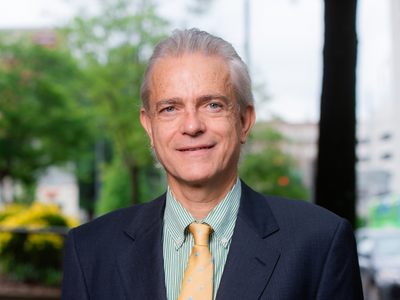 UAB Department of Neurosurgery David Hart White Endowed Professor Erwin Van Meir, Ph.D., recently received a $330,000 grant from CURE Childhood Cancer for his project, “Small molecule targeting of epigenetic reader MBD2 for medulloblastoma therapy.”
UAB Department of Neurosurgery David Hart White Endowed Professor Erwin Van Meir, Ph.D., recently received a $330,000 grant from CURE Childhood Cancer for his project, “Small molecule targeting of epigenetic reader MBD2 for medulloblastoma therapy.” Van Meir’s project, in collaboration with Department of Chemistry Professor Sadanandan Velu, will be funded through June 2024.
Brain tumors are the leading cause of death among children diagnosed with cancer, and among these tumors, medulloblastoma (MB) is the most prevalent and aggressive malignant brain tumor affecting pediatric patients. Despite an aggressive combination of treatments involving surgery, radiation and chemotherapy, approximately 30% of MB patients succumb to the disease. Survivors often experience long-term adverse effects from these treatments.
Van Meir has made a significant discovery regarding pediatric patients with MB, finding that they exhibit a loss of expression in a tumor suppressor gene, ADGRB1.
In preliminary studies, the Van Meir lab successfully reactivated the expression of ADGRB1 using a small molecule epigenetic compound called KCC07. This reactivation inhibited the growth of MB tumors and improved survival rates in mouse models.
With the support from CURE, UAB researchers will use chemistry to further develop this compound and enhance its potency and pharmacological properties.
The research goal is to transform KCC07 into a drug suitable for clinical testing. The improved compounds will be tested in mouse models of MB, and once an optimal compound is identified, it will advance to phase I clinical trials for further testing.
CURE is making history in this year’s grant cycle, directing $5 million to curing childhood cancers, the most CURE has ever funded in a single year. This year CURE received more than 70 grant applications and was able to fund 12 target projects, Van Meir’s being one of them.
According to CURE, they prioritize, “research that will lead to more effective treatments for children within two to three years,” and, “research aimed at solving recurrent and hard-to-treat cancers for which no effective treatment exists.”
Learn more about CURE and the impact they have on childhood cancers.